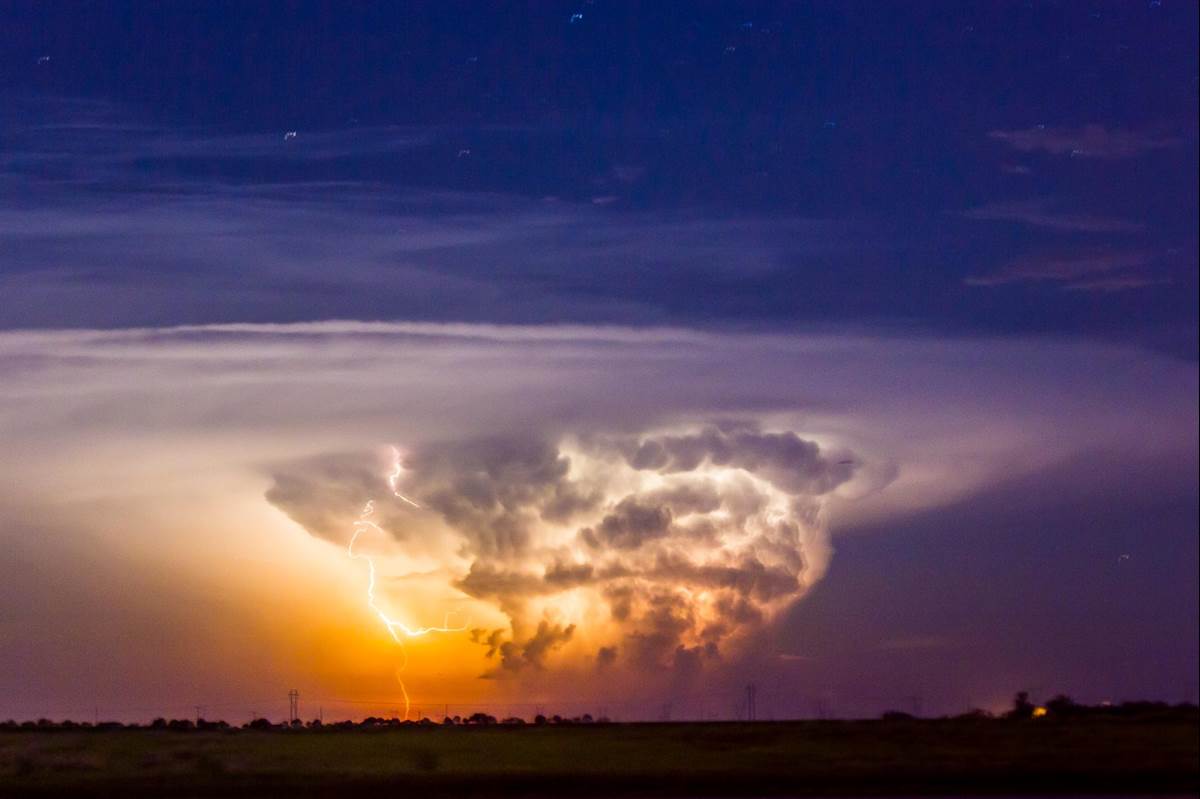This week’s episode of the Overheard at National Geographic podcast takes a look back at a devastating natural disaster from 2013 and what researchers were able to learn from it. In “Chasing the World’s Largest Tornado,” three experts share lessons learned from the El Reno tornado and how it changed what we know about these twisters.
National Geographic Explorer Anton Seimon is the first guest featured, who has spent nearly thirty-years studying tornadoes and chasing these storms every spring. Since 2010, tornadoes have killed more than 900 people in the United States and Anton Seimon spends a lot of time in his car waiting for something to happen.
Journalist Brantley Hargrove joined the conversation to talk about Tim Samaras, a scientist who built a unique probe that could be deployed inside a tornado. Anton worked closely with Tim and deploying the probe was a death defying task that required predicting where the cyclone was heading, getting in front of it, laying down the probe, and then running away as fast as you can. Tim Samaras’ groundbreaking work led to a TV series and he was even featured on the cover of an issue of National Geographic magazine.
Tim Samaras and Anton Seimon met up again in 2013 in Oklahoma City ahead of the El Reno tornado. The event became the largest tornado ever recorded and the tornado was 2.5 miles wide, producing 300 mile per hour winds and volleyball sized hail. The tornado claimed eight lives, including Tim Samaras. The famous storm chaser’s death shocked the entire community and left Anton looking for answers about how this storm got so out of control.
With advances in technology, Anton collaborated with other storm chasers to assemble a video mosaic of the El Reno tornado from different angles, using lightning flashes to line them all up in time. This video research then caught the attention of Meteorologist Jana Houser, who was this episode’s third guest.
Meteorologists use radar to track tornadoes and warn local residents to seek shelter, but the El Reno tornado revealed a big gap between the time a tornado forms and when it shows up on radar. Trees and objects on the ground get in the way of tracking a tornado, so it can only be done at cloud level. However, the El Reno tornado formed on the ground a full two-minutes before radar detected it in the sky.
For a long time, scientists believed that tornadoes started in the sky and touched down on the ground. In reality, they start on the ground and rise up to the sky, which is why this time difference was exposed. Anton Seimon is hard at work developing new methods of detecting tornadoes on the ground level in real time to help give residents in tornado prone areas as much of a warning as possible. Advances in technology are also making it easier to see close detail or tornadoes captured by storm chasers.
You can listen to this full episode and others at the official Overheard at National Geographic website.

